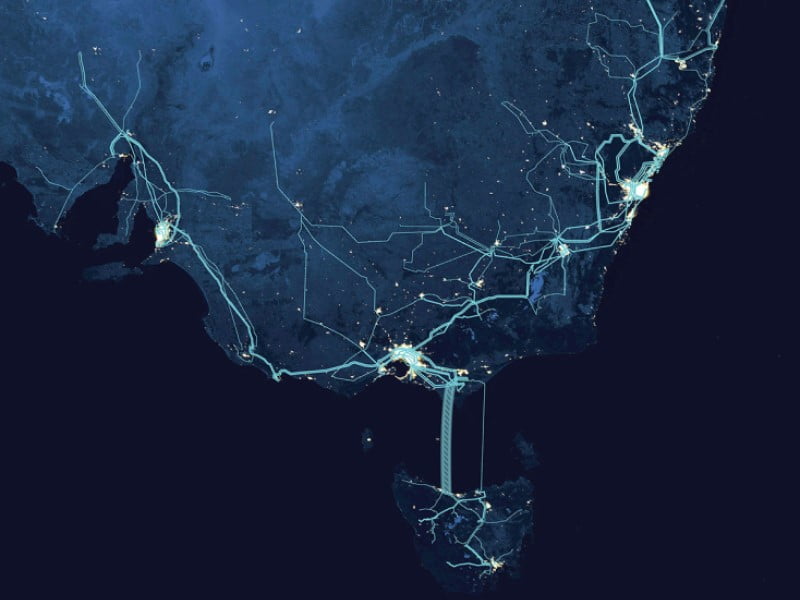The federal government’s $20 billion Rewiring the Nation initiative, a longstanding Labor election commitment, has kicked off with around $7 billion in support for transmission infrastructure across Tasmania and Victoria.
Together with the Tasmanian and Victorian governments, the Commonwealth will fund the $3.8 billion 1500MW Marinus Link, a two-way electricity and telecommunications connection between the two states. It will pipe electricity generated from pumped hydro stations into Victoria as Tasmania pursues a renewable energy output of 200 per cent of the state’s demand by 2040.
A concessional loan through the Clean Energy Finance Corporation will fund about 80 per cent of the project costs of Marinus Link, with the remaining 20 per cent coming as an equity investment equally shared between the Commonwealth, Victorian, and Tasmanian governments.
Also signed on Wednesday is an agreement between the Victorian and Commonwealth governments, which includes $1.5 billion of concessional financing for projects in Victorian Renewable Energy Zones. Both governments are also committed to coordinating regulatory processes to support the state’s offshore wind industry.

Prime Minister Anthony Albanese said the the Rewiring the Nation plan would help put Australia “on track to be a renewable energy superpower”.
“Rewiring the Nation has always been about jobs in new energy industries, delivering cleaner, cheaper and more secure energy, and bringing down emissions – today it begins doing just that. An electricity grid built for the 21st century is absolutely critical, but until the election in May there was no plan to deliver, let alone to do so at lowest cost for consumers,” Mr Albanese said.
Climate Change and Energy Minister Chris Bowen echoed a similar sentiment and accused the former Coalition government for “dragging their feet on Marinus Link” for more than six years. Mr Bowen also called Tasmania the “national leader in renewables”.
The former Coalition government’s federal budget 2020-21 included a $250 million program to advance transmission projects, which included Marnus Link and the Victoria-New South Wales Interconnector (VNI West), also known as KerangLink. In April, the former government also announced $75.8 million worth of underwriting support for early works on VNI West.
The low-cost financing will reduce the annual cost of Project Marinus to consumers by up to half, according to the federal government. Tasmanian Energy and Renewables Minister Guy Barnett said Tasmanian customers would “pay no more than 15 per cent of estimated total project costs across both the Marinus Link and North-West Transmission Developments”, when Marinus Link is complete.
It is also expected to create 1,400 jobs in Tasmania and in Victoria as well as $4.5 billion in net market benefits. A final investment decision on Project Marinus will take place in 2024, with the first 750MW stage to be operational from mid-2028, and the second 750MW stage from mid-2030.
A further $1 billion of low-cost debt through the Rewiring the Nation initiative is being committed to projects under the Tasmanian government’s Battery of the Nation plan. This includes support for the $650 million redevelopment of the Tarraleah hydroelectric power plant, which will double its capacity to 220MW, and a future pumped hydro project at Lake Cethana.
There will also be low-cost debt available for the Tasmanian government’s North-West Transmission Developments which consists of 240km of new and upgraded transmission lines. It will connect to the Marinus Link.
In Victoria, a $750 million concessional loan will also be made available for the development of VNI West, which will connect 4,000MW of new power generation. The federal government expects the transmission network to generate $1.8 billion in net market benefits and create 2,000 construction jobs.
Early works on KerangLink, which includes stakeholder engagement, land use planning, engineering design, and cost estimation, among other activities, is expected to be complete by 2026, with the transmission network to follow by 2031.
Clean Energy Council chief executive Kane Thornton welcomed the announcements, and said the Albanese government is displaying the political leadership and action that “investors have been calling for to ensure we have a smart, modern and 21st-century electricity grid”.
“A smart, modern and strong transmission system is a crucial piece of the jigsaw puzzle to deliver a lower cost, more reliable and clean energy power system and transition Australia to become a clean energy superpower,” Mr Thornton said.
“Australia is rapidly transitioning to a more flexible, low-cost, clean energy system and transmission projects – such as Marinus and KerangLink – and energy storage play a crucial role in Australia’s energy future.”
The projects receiving support in Wednesday’s announcement are a part of the Australian Energy Market Operator’s Integrated System plan, a 30-year roadmap outlining a development pathway to support the transition to net zero emissions and enable low-cost renewable energy.
Do you know more? Contact James Riley via Email.

